One day, while cruising the internet, we discovered an unbelievable deal on what might have been the best Mediterranean cruise ship itinerary we had ever seen: 10 Adriatic cruise ports and four countries in 11 days. Who could resist such an opportunity?
All we'd need to do was focus on enjoying ourselves while sailing the Mediterranean Sea from Rome (Civitavecchia) to Athens (Piraeus). We delighted in every destination and site, especially because almost every one was new. We’d only been to one of them before (that would be Venice).
10 Mediterranean and Adriatic cruise ports you need to visit
Anyway, this article is a summary of the 10 Mediterranean cruise ports that our cruise ship docked at along the way. Holland America really did its research; every single one is worth visiting!
I've included links to related stories and the best tours you can take at each port.
1. Civitavecchia, Italy (Rome Cruise Port)

Civitavecchia is the seaport closest to Rome and is one of the Mediterranean's largest cruise ports. Strictly speaking, Civitavecchia is not an Adriatic seaport. It lies on the Tyrennhian Sea, which borders Italy's western coastline. However, I've included it because most Mediterranean cruises begin or end there, no matter the itinerary.
Because we had never been to this part of Italy before, we arrived a few days early so we could take a look around the city before departure. Also, it was added insurance that a train delay on the day of the cruise would not cause us to miss the sailing.
Things to do in Civitavecchia
There's so much to enjoy in Civitavecchia that we never bothered to leave the city, even for the two nearby thermal baths that date from the time of Christ. If you don't want to look around the ancient town, other popular activities include:
- See pre-Republic ruins and uncover the Etruscan heritage of Italy on an excursion to Tuscania and the Tarquinia necropolis.
- Take a day trip to Rome to see the impressive Colosseum, Arch of Constantine and Imperial Forum, and then marvel at artistic masterpieces in the Vatican Museums.
- Spend the day in the beautiful Tuscan countryside to visit a local winery, the Archeological Park and Tomb of François, and enjoy a full Tuscan lunch.
2. Venice, Italy
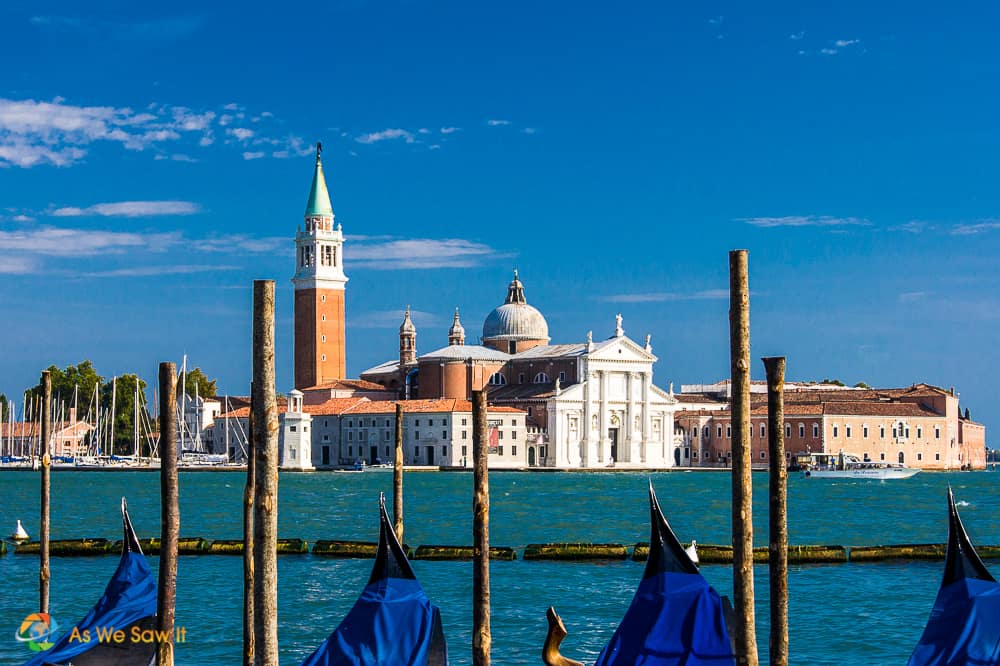
Venice, that iconic city of canals and gondolas, was literally built out of the marshes of the Adriatic. It is the most popular Mediterranean cruise port of all … even more so than Rome.
One of the most romantic cities in the world, Venice offers picturesque scenery and classic artwork at every turn. It has often been called the “home of the Renaissance” and was named a UNESCO World Heritage Site in 1987. From the Grand Canal to the Doge’s Palace in St. Mark’s Square, every canal, bridge, and building seems to be a masterpiece of architecture and every dish promises to be a masterpiece of cuisine.
Things to do in Venice
Popular activities include:
- Chic shopping on Rialto Bridge or at Piazza San Marco.
- A once-in-a-lifetime gondola tour, to get a canal-level view of Venice and its sinking buildings.
- Visiting the famous Bridge of Sighs and the Doge's Palace.
If you've already been-there-done-that in Venice, it's fun to try to get lost in Venice, or venture further afield by visiting another island in the Venetian Lagoon. You can take a vaporetto and explore on your own, or book a tour like this one and see a few islands in a few hours.
- For an authentic souvenir of Venice, the island of Murano has produced exquisite Venetian glass for centuries (vases and jewelry are popular mementos)
- The colorful island of Burano is ideal for photography. This is where you need to shop if you're looking for authentic, handmade Venetian lace.
3. Ravenna, Italy
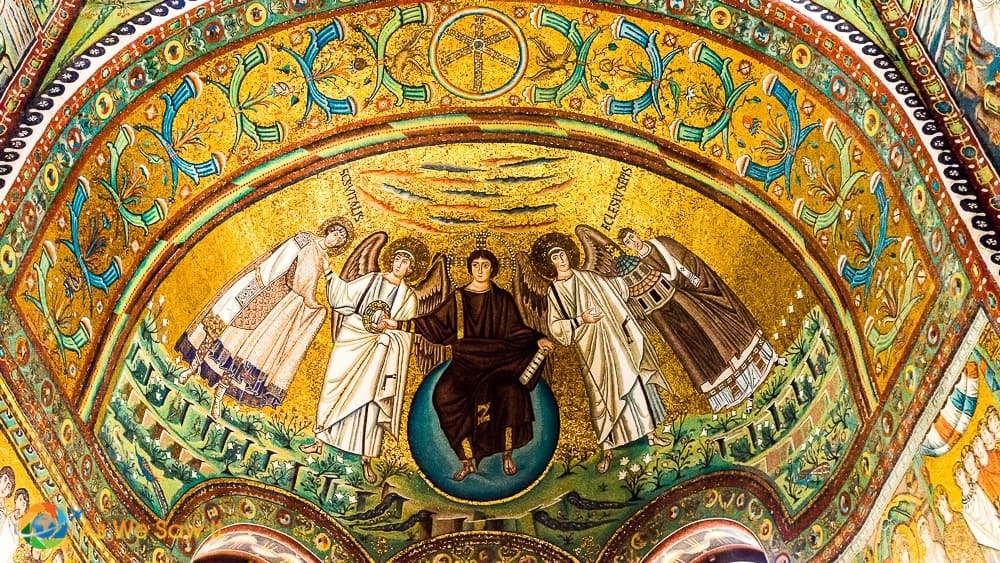
It's a shame more Adriatic ocean cruises don't stop at Ravenna and that it isn’t a well-known tourist destination. Once the capital of the Western Roman Empire, Ravenna is famed for its exquisite Arian and Byzantine mosaics. Eight locations are so special they have been designated a UNESCO World Heritage Site.
Take the Basilica of Sant’ Apolinare, for example. What may look like a lovely collection of tiny, bright tiles on close inspection will, when you step back, transform into a vivid image of a sea voyage, an image of Jesus, or a choir of angels. Waxing philosophical for a moment, I guess everything resolves into clarity if you can just achieve the proper perspective.
Another interesting fact: Italy’s great Dante Alighieri (author of The Divine Comedy), is buried in Ravenna, and you can visit his tomb (free).
What to do in Ravenna
- The hop-on/hop-off bus is a good option for touring Ravenna, but don't rely on it for transporation. The infrequent schedule was so frustrating that we ended up walking to many sites. Hiring a guide costs more, but it's a better use of your time. Plus, you'll see more.
- Notable out-of-town excursions include Bologna, Ferrara, and the Ferrari museum.
- You can even leave Italy and tour San Marino, the world’s oldest surviving republic. San Marino has remained free since 301 A.D., even during the Renaissance and World War II. This tiny country, which covers a total area of only 23 square miles and has a population of only about 22,000, is completely landlocked by Italy. Click here to learn more.
4. Dubrovnik, Croatia
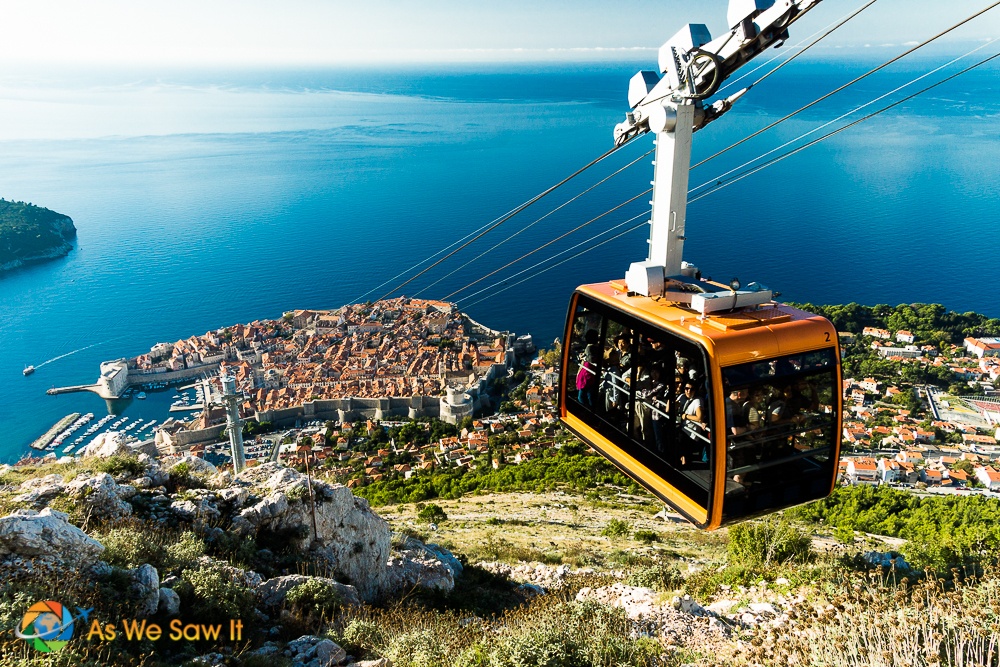
Dubrovnik is one of the most popular Mediterranean cruise stops and competes with Venice for port activity. However, even though Venice once controlled the Dalmatian coastline, the two cities couldn't be more different. Dubrovnik's striking red-tiled roofs and impressive 12th-century defensive walls have made it one of the finest and best-preserved medieval cities in the world.
Dubrovnik is full of quaint bazaars and markets, Baroque churches, museums, palaces, and monasteries. Take time to meander through the less crowded side streets that have been polished smooth over centuries of use, and stop for a bite to eat at a local restaurant or café to people watch.
Climb the steps to the top of the walls (admission charge) and walk around the perimeter of the city. They will offer a unique perspective of Old Dubrovnik and the Adriatic. Just remember to wear a hat and sunglasses, and bring water. The city's pale stone walls radiate heat and reflect sunlight.
What else to do in Dubrovnik
- Take a Game of Thrones tour and see where King's Landing scenes were filmed. (You may even hear stories from behind the scenes; some of the tour guides were Game of Thrones extras and stand-ins.)
- The best views of Dubrovnik and the Adriatic are, without a doubt, from the top of Mount Srd. Take a cable car to the top (or hire a driver, as we did), enjoy the restaurant at the top, and give your camera a workout.
- Soak up the sun at the city's nearby beach
- Enjoy the local atmosphere in Cavtat, a picturesque resort town.
- Cross the border into Bosnia and Herzegovina to visit the religious pilgrimage site of Medjugore and take in the stunning natural beauty of the town of Mostar, with its iconic bridge arching over the meandering river below. (Bring your passport!)
5. Split, Croatia

Split, the second largest city in Croatia, began in the 6th century BC. It has endured everything from Greek rule to Roman domination to post-war Socialist politics and is now a powerful port and tourist destination.
With a history like that, it's no surprise that Split’s historic center is a UNESCO World Heritage Site. Here you’ll find historic Diocletian’s Palace, the old Castle market, and plenty of buildings sporting Roman or Venetian architectural styles.
Things to do in Split, Croatia
- Take a brief tour of the city on the free walking tour (be nice and tip the guide well).
- Check out the local farmers’ market for some fresh fruit, olives, or a sample of the local cheese.
- Look for a wine shop that offers tastings or just order a glass with your meal. We discovered one in a hidden corner of the city and can’t say enough good things about Croatian wines. Few if any Croatian wines are available in the U.S. American wine distributors are missing a golden opportunity, that’s for sure.
- Sail by catamaran to Hvar and Pakleni Islands. Explore Hvar's old town and stop to swim in peaceful bays before returning to Split as the sun sets.
6. Kotor, Montenegro

You'll find plenty of natural beauty, Venetian architecture, and ancient history in Kotor, Montenegro. The town lies on the Bay of Kotor, a secluded inlet, partially hidden from the Adriatic by towering limestone cliffs. Kotor earned its status as a UNESCO World Heritage Site both for its medieval city and its picturesque landscape. It could easily be called the most beautiful town in Montenegro.
Kotor was settled during ancient Roman times (168 BC) and its historical sites abound. The two most outstanding spots are Cathedral of Saint Tryphon in the old town (built in 1166) and the ancient walls that surround the city. The walls were built for protection by the Republic of Venice.
Things to do in Kotor
- Kotor’s main square, Piazza of the Arms, has a beautiful old stone clock tower and offers a variety of excellent restaurants, cafés and shops that will keep you busy for quite a while. But please, don’t miss the less touristed side streets, where you can often find even better prices, more attentive service and more authentic local dishes.
- Wine lovers, rejoice! Local wineries produce absolutely amazing wines at incredibly low prices.
- There's a hop-on/hop-off tour bus that runs between Kotor and Perast.
- In Perast, you can enjoy a short cruise to Our Lady of the Rocks, a manmade island in the bay. Legend has it that the island was formed over centuries by seamen who tossed rocks in the sea to keep an ancient oath. Today, the islet has a small church and historic paintings, including a 17th century baroque masterpiece from Perast.
- You can also take a highly-rated private tour to visit some fascinating towns along the bay.
7. Corfu, Greece

The second largest Greek island in the Ionian Sea, Corfu (or Kérkyra, as it is locally known) serves both as a major tourist destination and a producer of olive oil and local wines. Its neoclassical houses and ancient fortifications dating from the Venetian era, are what gave Old Town Corfu its status as a UNESCO World Heritage Site.
Corfu is the perfect place to wander. Meander along ancient bougainvillea-laden cobblestone streets, among buildings sporting Venice’s characteristic arches, and visit Greek churches such as the church dedicated to Our Lady of the Cave or Saint Spyridon church, where the body of the island’s patron saint lies.
Whether you take the HOHO sightseeing bus or explore the town on foot, make sure you cross the moat to visit Kerkyra's ancient Palacio Frourio (old citadel). It was built by the Venetians and is now used for cultural events and concerts.
What to see in Corfu (Kerkyra)
- Nearby Achilleion Palace is a favorite with cruisers. Also known as Sissy's Palace, it is full of magnificent statues that honor the strong and brave Achilles, warrior of the Trojan War. Cruise ships offer tours, or you can visit on your own.
- To get a break from all the UNESCO sites and tourist-packed attractions, spend all or part of your day at a local beach. Glyfada beach is well known for its crystal clear waters, while the large surface of soft sand is surrounded by tree-covered cliffs and imposing rocky formations.
- Visit award-winning Governor's Olive Mill, take a guided walk through the ancient olive groves, and learn how to taste and recognize high-quality olive oil just as the professionals do.
ⓘ TIP: For an authentic taste of Greece, order horiatiki salata for lunch. It's a true Greek salad. We liked it so much that we had it every day and never got tired of it. To find out what makes it special, read my recipe for authentic Greek salad.
8. Katakolon, Greece

Katakolon cruise port is known as the gateway to one of Greece's most legendary sites, Ancient Olympia. Olympia was a sacred sanctuary for the ancient Greeks, dedicated primarily to Zeus, the king of the gods. It was also the birthplace of the Olympic Games, first held in 776 B.C. Many of the structures that can still be seen today date back to even earlier times.
It goes without saying that Ancient Olympia is the top shore excursion in Katakolon. If you're an independent traveler, you can take a train from Katakolon to Olympia for about 10 euros.
For guided tours, the cruise line excursion is a good option, or you can make your own arrangements for more flexibility. Most Olympia tours are run by locals, and many combine Olympia with one or two other experiences. If wine, olive oil tastings, beaches, or castles appeal to you, this is worth considering.
What to do in Katakolon
Here are some great things to do in Katakolon besides visiting Ancient Olympia:
- Visit the Museum of Ancient Greek Technology: Explore fascinating exhibits showcasing ancient Greek inventions, including the first alarm clock and automatic gates.
- Take a ride on the Katakolon Tourist Fun Train: This scenic 30-minute train ride takes you through the countryside, with stops at Mercouri Winery and Agios Andreas Beach. Trains run every half hour.
- Tour the Mercouri Estate: This family-owned winery and farm, established nearly 150 years ago, offers wine tastings and a chance to learn about local winemaking. Guided tours are available.
- Relax at Kourouta Beach: Enjoy the sandy shores, rent a sunbed and umbrella, and indulge in snacks and drinks from the beach bar while swimming in the clear blue waters.
- Shop for souvenirs: Stroll through the charming shops in Katakolon to find unique gifts and local products, and you'll be supporting small businesses in the area.
Easy one day in Katakolon itinerary:
- Start your day with a ride on the Katakolon Tourist Fun Train, taking in the beautiful countryside.
- Stop at Mercouri Winery to enjoy a guided tour and sample some delicious local wines in the tasting room.
- Continue to Agios Andreas Beach for lunch, tranquil views, and a bit of beach time.
- Return to Katakolon in time to visit the Katakolon Museum and check out the town's shops.
💡 PRO TIP: If you want to experience a sleepy Greek town, visit Katakolon on a day when no cruise ship is expected. Only about 600 people live in this tiny coastal town, and it's a completely different world when tourists aren't in port.
9. Nafplio, Greece

Nafplio, also known as Nafplion, was one of our favorite stops, not only for its enchanting streets but because of its fascinating past.
The Byzantines took control of it in the eleventh century, followed by the Venetians, the Ottomans, and finally, the French. After the Greek War of Independence, Nafplio was the first capital of the newborn Greek state (from 1823 to 1834).
As one of the largest Mediterranean cruise ports, Nafplion offers passengers a wide range of entertainment options. Clear waters, endless adorable shops, and miles of scenic walking trails await you, not to mention the town beach, where you’ll frequently spot locals casting for everything from flying fish to octopus.
There's lots to see, as well.
What to do in Nafplio
- The impressivie Palamidi Fortress that looms over Návplion played a large role in the Greek independence effort of 1822. It's worth a visit for the views, if nothing else.
- At the castle of Acronauplia, the oldest part of Návplion, you will see stone walls dating back to pre-classical times.
- For history buffs who like archaeological sites, the UNESCO World Heritage Site of Mycenae is just a short bus ride away. Or you can book a half-day tour that includes an olive oil tasting along with a visit to Epidavros, another World Heritage Site.
- Local guides can take you on a walking tour through Nafplio and show you its most picturesque alleys and important sites. Afterward, walk through the beautiful old town on your own to check out its many intriguing museums and inviting restaurants.
- If you enjoy olive oil, wine, honey, olive oil or cooking, get to know Greek gastronomy via culinary tours around Nafplio.
10. Piraeus, Greece (Athens Cruise Port)

Our tenth and final Adriatic cruise port was Piraeus, which serves Athens. As soon as we disembarked, we headed straight to the capital city. Athens was the epicenter of the classical world in the 4th and 5th centuries B.C., and much of its rich history and culture has survived until today. The city's major must-see is the Acropolis, which can be seen from everywhere in the city. Due to its historic significance, it too is a UNESCO World Heritage Site.
Visit the Acropolis to get a close-up look at the Parthenon, the temple of Athena Nike and the stone amphitheater called the Odeon of Herod Atticus. While there you can also climb Mars Hill, where the apostle Paul addressed the leaders of Athens (see Acts 17:16-34).
We also really enjoyed the Monostiraki neighborhood, the National Archaeological Museum and watching the Changing of the Guard at Syntagma Square. Highly recommend all three.
Best time of year for a Mediterranean cruise
If you plan to be cruising along the Adriatic coast, be aware that the region gets unbearably hot, unreasonably expensive, and extremely crowded in the summer.
Spring and fall offer lower temperatures, better prices, and fewer crowds.
Ready to go?
Whether you're looking for an adventure or a peaceful respite, the Adriatic Coast has something perfect waiting for you. Soak up the sun on one of Croatia's many gorgeous beaches, explore Venetian canals lined with centuries-old buildings, or take a hike in the stunning Italian Alps.
No matter what you choose to do, you're sure to have an amazing time cruising along the Adriatic Coast!
ⓘ TIP: Book some extra time in Athens so you can explore the city and visit one of the famous Greek islands.

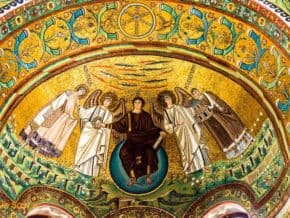
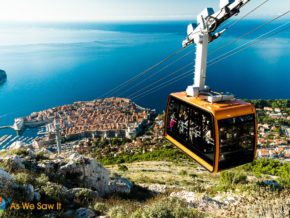
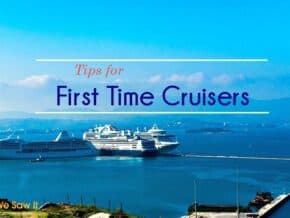
I didn’t like Venice much, but maybe that’s only my impression. Next week I will be in Athens. What would you reccommend to visit? Your top 3? 🙂
Our Top 3 in Athens? Well, we cheat because we like to take the hop on/hop-off tour bus to get an overview and see what looks intriguing. Not sure if that counts as one of the three, lol.
Of what we saw on our bus tour, our first would be (of course) the Acropolis — besides the Parthenon be sure to see the Odeon of Herodes Atticus and climb the Aeropagus, which not only has fabulous views but was important in Greek and Biblical history besides (see Acts 17:24).
Second, we’d recommend walking around Plaka, which is the oldest neighborhood (conveniently near the Acropolis). It lies between Syntagma and Monastiraki Square. Highly recommend the Changing of the Guard at Syntagma and shop/eating in Monastiraki.
Third, because of Greece’s ancient history we really liked the National Archaeological Museum. We’re fans of world-class museums, but if you’re not, then perhaps you’ll take the bus as #3. 🙂
I think cruises are a great way to discover the world. They give you an sneak preview of what different places have to offer and helps you decide if you want to come back and do a more in-depth exploration later.
Yes, you’re right, Anda. It’s also very convenient for people who travel to collect passport stamps. One day in a country, then on to the next!
Amazing pictures, beautiful countries and great overview. cruising is not my favorite way to travel but you could definitely “sample” quite a few countries in one trip- which may work just great for some people and some trips!!
You’re right; cruising is good for a quick overview.
Awww, this does look really amazing! I have been to many of the countries that you describe. But not the ports.
Found you through #TheWeeklyPostcard.
Of the ones I mentioned, which country was your favorite?